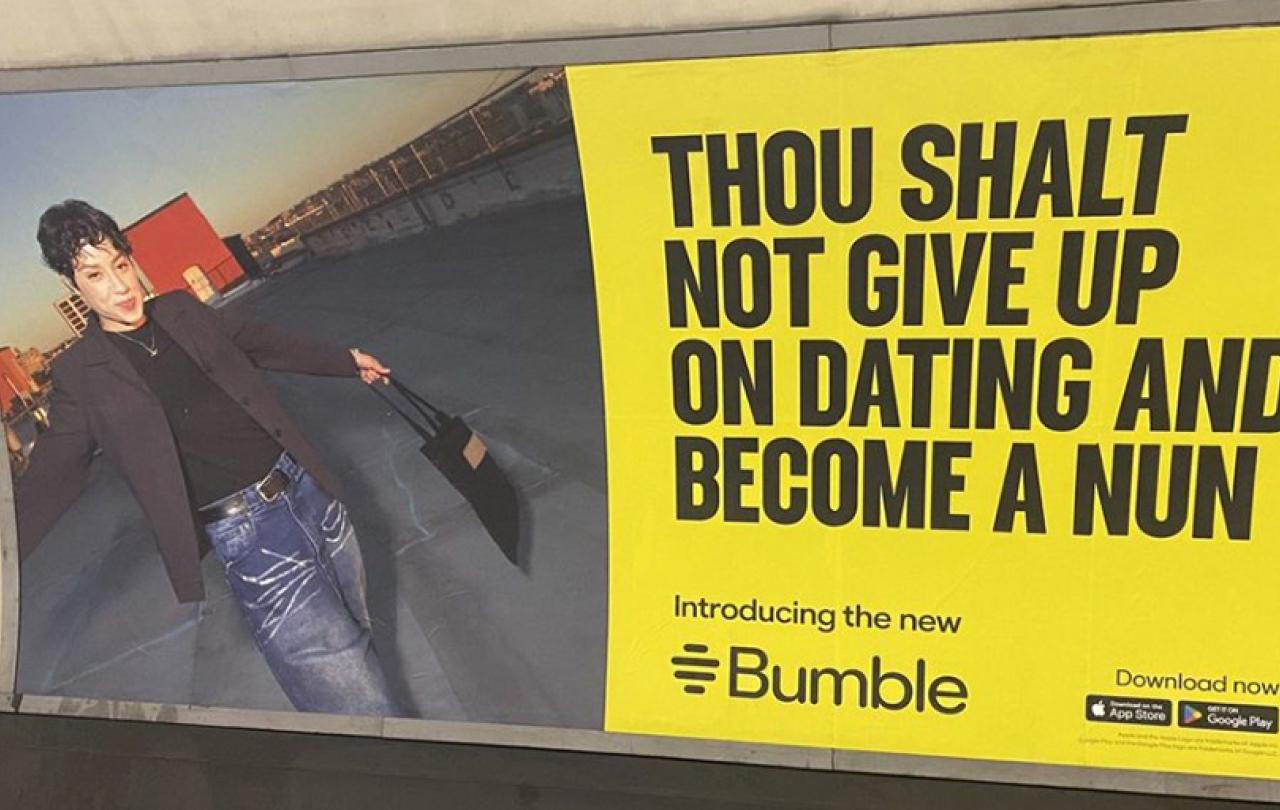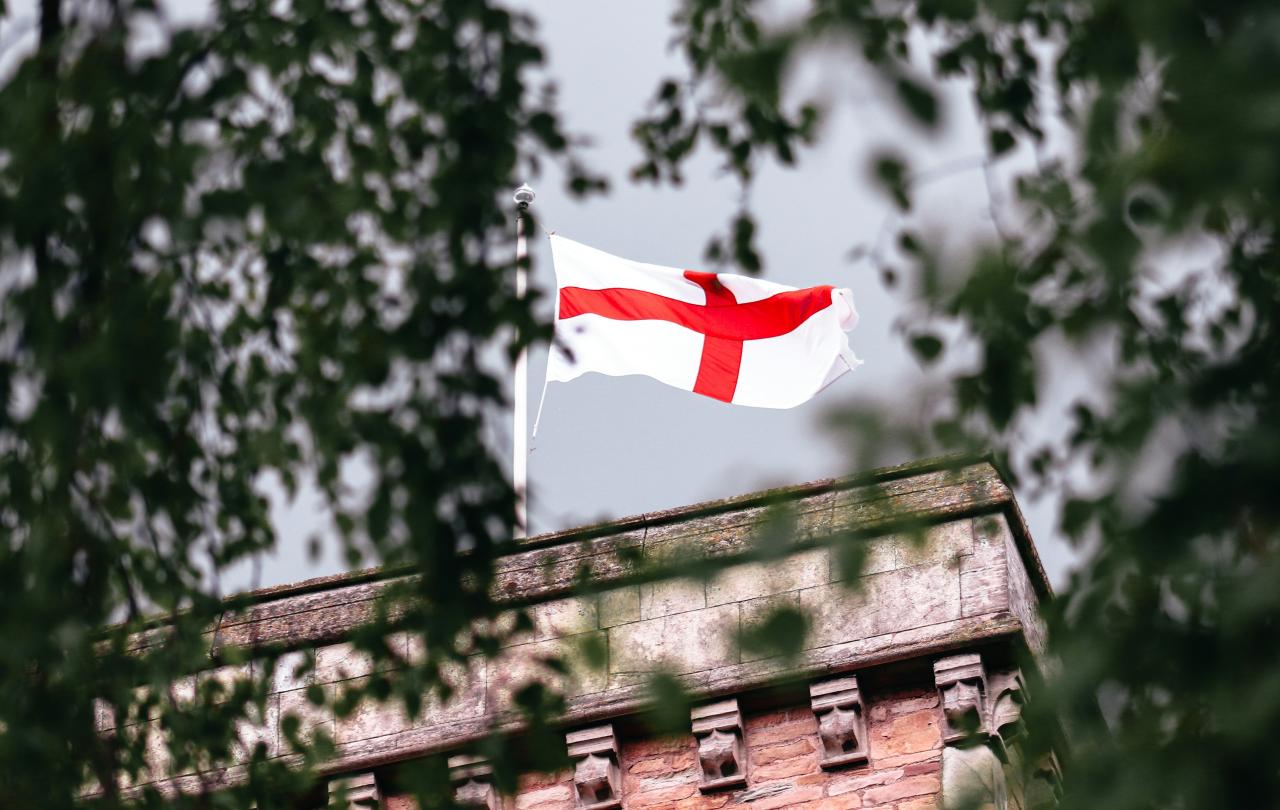
Recent news has sparked a furore over celibacy, and, as I will explain, the need for a new sexual revolution. Feminist theologian, Sarah Coakley, points to in her book, The New Asceticism, points to why we need this new sexual revolution
“the problem with desire is that it has become so heavily sexualised in the modern, post-Freudian period as to render its connection with other desires (including desire for God) obscure and puzzling.”
A glance at the media on both sides of the Atlantic provides evidence. Senator Tim Scott’s singleness is derided on the US news cycle, and London Underground adverts for dating app Bumble undermined the choice to be a nun or make a vow of celibacy.
For decades, the bowdlerised notion that Freud saw celibacy as a form of suppression, has created a deeply damaging myth that if you are not having sex, you are not just repressed, you are not even human. In its inaner, but still hurtful forms, if you are celibate, you are not trustworthy, a repressed pervert, or worse, worthy of being socially excluded. Of course, bad celibacy has had terrible results in and outside the Church, but so has bad marriage, and yet we do not treat the married or marriage this way.
You would expect to turn to the Roman Catholic, Anglican or mainline churches for a nuanced and profound contradiction to a culture obsessed with what they see merely as a ‘lack of sex.’ Instead, the Pope was recently reported to have made the comment that there was already too much “frociaggine” in some seminaries. The Italian word roughly translates as “faggotness”. Matteo Bruni, the director of the Vatican’s press office stated: “As he [the Pope] has stated on more than one occasion, ‘In the Church there is room for everyone, everyone! Nobody is useless or superfluous, there is room for everyone, just the way we are.’”
“The Pope never meant to offend or to use homophobic language, and apologises to everyone who felt offended [or] hurt by the use of a word,” Mr Bruni concluded in the Vatican statement.
The Pope has made other comments about celibacy, dissuading gay people from entering the priesthood just on the basis of sexual orientation. It is hard to argue that this is anything but discrimination. If the Pope wanted LGBTQI+ people to inhabit a traditional ethic, then provide a way constructively for them to do so.
This billboard ad reveals a culture which is erotically moribund and which has lost the fact that love is inevitably sacrificial in nature.
Now to turn to the dating app world, Bumble, aware of the new rise of singleness and celibacy (around 51 per cent of the American population is single), particularly among young women, struck out against this choice with controversial adverts.
This billboard ad reveals a culture that is erotically moribund and which has lost the fact that love is inevitably sacrificial in nature. My heart sank as I saw this billboard on the Underground. As someone who wrote their doctorate on celibacy, and has chosen to be dedicated to a love greater than sex and marriage, and who chose to be consecrated and vowed to celibacy, I felt angry at the notion that my choice, and that of millions of people, was derided as fanciful. This felt like another chip off the liberal project that I want to believe in of true diversity of opinion, and a shared city and society.
However, the value of sacrificial love at the bedrock of late modern and post-secular society was revealed as still as powerful as ever with Bumble receiving a wide response of outrage, and the marketing manager responsible being subsequently fired.
If we are to love someone, we must learn to deny choices and narrow our field of volition where we choose them over other pressing concerns.
In reading this I felt that some justice had been served. I could not escape the words of Pope Benedict XVI : “When Jesus speaks in his parables of the shepherd who goes after the lost sheep, of the woman who looks for the lost coin, of the father who goes to meet and embrace his prodigal son, these are no mere words: they constitute an explanation of his very being and activity. His death on the Cross is the culmination of that turning of God against himself in which he gives himself in order to raise man up and save him. This is love in its most radical form.”
For a moment, this radical love reflected in a healthy, non-repressive celibacy, which gives itself up for God and the other, and marriage as its sacrificial counter-part, was vindicated and, for a moment, was given the value it deserves, and which Bumble, and even at times, that God’s own church, have betrayed.
If we are to love someone, we must learn to deny choices and narrow our field of volition where we choose them over other pressing concerns. Such a view of love has been lost both inside and outside the Church.
Only a new asceticism, as Sarah Coakley avers, can purify “desire in the crucible of divine love, paradoxically imparting true freedom through the narrowing of choices.”
The fact we have gained such an impoverished ascetical or moral imagination for our loves does not bode well for how not just single people, but all people can flourish. A life of flourishing which does not involve sexual acts or in which a love beyond sex can be expressed in friendship speaks to a hope beyond sex and marriage, without which the human heart will remain restless and unsatisfied.
As Pope Benedict XVI states in his essay, Deus Caritas Est: “God is the absolute and ultimate source of all being; but this universal principle of creation—the Logos, primordial reason—is at the same time a lover with all the passion of a true love. Eros is thus supremely ennobled, yet at the same time it is so purified as to become one with agape.” Our society, from Pope Francis all the way to Bumble needs a new sexual revolution, which sees that sex is a clue to this deeper love of God for which we were created and which beckons us as with a faithfulness and passion no other lover can provide.





